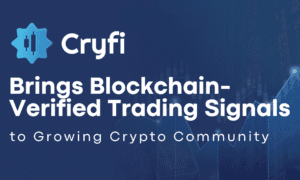Introduction: 2008 to Today – As a consumer society, we are prone to going to extremes – in terms of our wants and desires, as well as our predictions for the future. If history is any indication, these tendencies can get us into hot water, and oversights and rules evolve in order to protect us from our own worst enemy – which is often ourselves.
This was well-illustrated in 2008. After the housing market crash – which was ultimately the result of poor lending practices and consumer exuberance to assume more mortgage debt than was reasonable. When the bubble eventually burst and credit availability from traditional banks sharply contracted, a new breed of financial services emerged out of the ashes – the marketplace lenders. Credit-hungry borrowers, as well as Wall Street overall, became enthralled by the idea of fast, unfettered, deregulated access to loans (would we ever learn our lesson)? Valuations for these companies soared and some even IPO’d; in late 2014, shares of LendingClub surged more than 50 percent on their very first day of public trading.
However, since then the widespread exuberance for marketplace lenders has cooled. Earlier this year, a series of scandals was exposed, most notably at LendingClub. It was discovered that the CEO and his family members were actually purchasing LendingClub-originated loans as a means of propping up the company’s perceived market performance. Also coming to light was the fact that LendingClub unethically tampered with documents to push through the sale of certain loans. Skittish investors pulled back from the marketplace lenders, and as investments dried up, disappointing earnings and dramatic reductions in force followed.
Not only were questions percolating around the transparency of marketplace lenders, but many were beginning to ask even deeper, more serious questions. With no other sources of revenue beyond loan generation, was the marketplace lending business model even viable? How would these platforms sustain themselves in the event of a capital tightening, like a recession? As investments dried up, marketplace lenders responded by lowering their lending standards, and for many, the housing crash was simply still too fresh in the mind. Were these “eBays for money” really a good thing – or a recipe for economic disaster? Naturally, public favor began to sway back toward the established banks, whose charge-back rates were consistently proving much stronger than the marketplace lenders. Many industry watchers reversed their previous stance that the traditional banks were surely doomed for extinction.
A Middle Road
A cloud of uncertainty and negativity continues to hang over the marketplace lenders. However, the current state of affairs is likely just a bump in the road to maturation. In our view, marketplace lenders still have a very bright future, because they have shown us that speed and convenience are possible in the world of financial services. As an industry, it would be a shame to throw the baby out with the bath water. Instead, what is needed is some level of regulation and oversight, in order to protect borrowers, lenders, investors and the greater economy from over-exuberance and excess. What types of regulation might help?
First, we should allow loan originators to serve only as originators – Originators should not be allowed to be originators, brokers and/or ratings companies all rolled into one, as they have been in the current marketplace lending business set-up. Combining these disciplines creates a perfect storm for a lack of transparency. Here’s why: as noted above, most marketplace lenders have no other source of revenue besides originating and selling loans. This means they have a vested interest in selling every single loan they originate on their books. They may prophesize that they have tools to analyze and convey the risk levels of these loans, but in the current set-up, marketplace lenders don’t have to disclose any information they don’t want to disclose. This creates an unavoidable conflict of interest, right from the start. In other more mature markets like the traditional stock market, these roles are broken out.
Only licensed brokers should be able to execute trades, and only with sophisticated investors and credit-worthy borrowers. In the more mature, traditional stock exchange model, not only are the roles of originator, broker and ratings companies broken out, but prospective brokers need to go through in extensive, rigorous process to secure their licenses. Many begin by pursuing finance-related educations, and after that they must pass a challenging series of tests. In the United States, brokers are required to obtain several licenses, such as Series 7 and 63, before they are allowed to transact business with clients. Brokers must also satisfy Continuing Education requirements in order to demonstrate an ongoing awareness of compliance. In the current marketplace lending model, essentially anyone working there can issue a loan to anyone. This lack of proper qualification – on both the broker side, as well as the borrower side – can be extremely dangerous.
Finally, there needs to be an independent external rating system for loans and groups of loans. These organizations would be similar to the roles of Fitch, Moody’s and S&P in the traditional U.S. stock market. The ratings published by these credit rating agencies are used by investment professionals to assess the likelihood that debts will be repaid. Marketplace lending needs similar centers of expertise, offering independent views on loan quality, loan performance and individual marketplace lenders’ performance.
Glimpsing Into the Future
If we’ve seen anything in recent years, it’s the dangers of going to extremes – both in terms of borrowers and lenders over-extending themselves, and the industry as a whole issuing sweeping predictions for the future. For all of their positive attributes, the marketplace lending industry still has a lot of maturing to do. Regulation does not have to be a dirty word; rather, it can put in place some parameters to help guide these organizations to a more positive future.
Also, in contrast to the beliefs of some bold industry prognosticators, we shouldn’t expect the traditional banks to fade away anytime soon. In many instances they are piggy-backing on the popularity of fintech upstarts in order to bolster their own services. Consider Credit Karma’s business model – major financial services firms advertise on the site, and through advanced analytics, Credit Karma is able to route users of their service to these firms, securing a fee in the process. We expect to see more collaboration like this in the future.
The same leading financial services firms that once viewed the marketplace lenders as a disruptive threat, are now trying to incorporate their attributes of speed and convenience into their own business models. The most famous example of this is the deal between JP Morgan Chase and OnDeck Capital, where the two collaborated to launch Chase’s fast online lending platform for small business loans in April. As JP Morgan Chase CEO James Dimon eloquently stated, “The marketplace lenders are very good at reducing the ‘pain points’ in that they can make loans in minutes, which might take banks weeks.”
Finally, we are seeing we are also seeing the emergence of a new model known as “composite lending,” which combines the speed and convenience of marketplace lending, with the reliability and resiliency of established balance sheet lenders, many of which are banks. In the composite lending model, an online platform is deployed to facilitate the sale of balance sheet lender-originated loans to secondary investors. The composite lending approach is expected to be a robust outgrowth to the marketplace lending trend, but without the current obstacles including viability concerns (outside of loan origination, balance sheet lenders have other lines of business that can help insulate them during a downturn) and transparency issues (unlike marketplace lenders, balance sheet lenders do not face intense pressures to sell off loans all the loans they originate, including those that may be high-risk).
In summary, the future of financial services is not an all or nothing, black-and-white scenario, banks versus marketplace lenders. We believe each side can benefit by taking a lesson from the other’s playbook. The marketplace lenders simply cannot afford to run wild, and need more controls and oversight. On the other side, traditional banks need to seriously consider and address changing market dynamics and borrower preferences that prize speed and convenience above all else. As a recent millennial survey pointedly found, most millennials would prefer having a root canal over having to interact with a traditional bank!
Moving forward, the most successful financial services firms are apt to be those that can apply controls while upholding the virtues of speed and convenience that current marketplace lenders have demonstrated can exist. It is these players that will emerge as leaders and help create a more prosperous environment for the entire borrower/lender/investor ecosystem.
By Oleg Seydak, CEO, Blackmoon Financial



















































